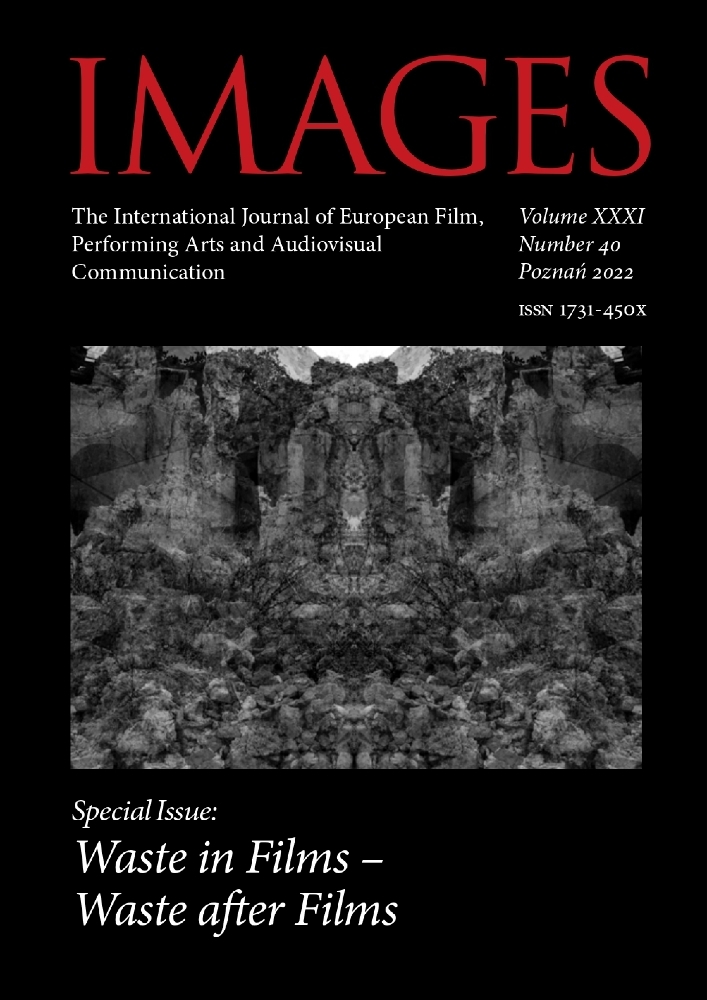Abstrakt
After the end of the Second World War, cinema culture in the People’s Republic of Poland underwent a crucial transformation. One of the aspects of this change was the new movie import model: most international sources were replaced by films from the Communist bloc, principally the Soviet Union. Italian movies constituted an important exception. In addition, translations of works by C. Zavattini and U. Barbaro were published (the latter was even appointed a professor at the Film School in Lodz). However, some movies deemed neorealist were either not permitted by the censorship bodies (it banned several of Rossellini’s works) or appeared on Polish screens with a significant delay (which was the case of Umberto D.).
The article focuses on the reception of the film Miracle in Milan (dir. Vittorio De Sica) in the Polish movie magazines and books published before 1956. The case of this film seems particularly interesting, as opinions on it have changed over the years (as has the assessment of the neorealist movement as a whole), and the film itself has provoked controversy. In the Stalinist period in Poland, critical opinions dominated, and Italian neorealism (and De Sica’s film) was accused of pessimism and losing sight of “great revolutionary perspectives”. The film’s fairy-tale formula and the “transcendental” themes present in the plot were also difficult to accept. This negative attitude changed during the Thaw, when neorealism became something of a positive example of progressive film aesthetics, an example to follow; the authorities then allowed neorealist films (including Miracle in Milan) to be framed in religious terms.
Bibliografia
Aristarco G., Miracolo a Milano, „Cinema” 1951, nr 62, s. 4
Barbaro U., O neorealizmie w kilku słowach, „Film” 1956, nr 31, s. 6
Beylin S., Czy to bajka, czy nie bajka?, „Film” 1955, nr 8 Bruno E., Miracolo a Milano, „Filmcritica” (3 lutego 1951)
Casiraghi U., Miracolo a Milano nuovo film di De Sica, „L’Unità” (9 lutego 1951)
Chiaretti T., Miracolo a Milano, Da Totò il buono, al poveri disturbano: – Una favola amara sull’Italia dei nostri tempi – Accusa a una società dominata dall’egoismo dei plutocrati, „L’Unità” (10 lutego 1951)
Chiarini L., Rozmowa o neorealizmie, „Film na Świecie” 1956, nr 6, s. 56–72
Grzelecki S., Dwugłos o filmie „Cud w Mediolanie”, „Film” 1953, nr 14, s. 10–11
Grzelecki S., Laskowska H., O filmie włoskim, Warszawa 1955
Helman A., Kilka uwag o inspiracjach stylistycznych szkoły polskiej, [w:] Kino polskie: reinterpretacje. Historia – ideologia – polityka, red. K. Klejsa, E. Nurczyńska-Fidelska, Kraków 2008
Il diavolo, Miracolo a Milano e le disavventure del „Tempo”. I giornali di Mobbi contro De Sica, „Unità” (24 lutego 1951)
Ingrao P., Hanno paura di Totò il buono, „Unità” (16 lutego 1951)
Jackiewicz A., Latarnia Czarnoksięska, Warszawa 1956 Jackiewicz A., Od neorealizmu do widowiska, „Nowa Kultura” (16 grudnia 1956)
Jackiewicz A., Z ziemi włoskiej do polskiej, [w:] Latarnia czarnoksięska, Warszawa 1956, s. 148–153
Klejsa K., Świat, który przezwyciężamy i pozostawiamy za sobą. Import, rozpowszechnianie i widownia filmowa z krajów kapitalistycznych w Polsce Ludowej w latach 1949–1956 w świetle badań archiwalnych, „Kwartalnik Filmowy” 2019, nr 108, s. 29–52 https://doi.org/10.36744/kf.173 DOI: https://doi.org/10.36744/kf.173
Laskowska H., Dobry Toto, „Film” 1953 nr 13, s. 8–9
Leszczyński W., Realizm, ale jaki?, „Film” 1954, nr 14, s. 6–7
Małcużyński K., Uwaga na film włoski, „Film” 1947, nr 31–32, s. 12
Michałek B., Neapolitańczycy w Mediolanie, „Przegląd Kulturalny” 1955, nr 28, s. 6
Michałek B., Polska przygoda neorealizmu, „Kino” 1975, nr 1, s. 27–33
Michałek B., Wierność prawu grawitacji czy fantastyka?, „Przegląd Kulturalny” 1955, nr 36, s. 4
Miller-Klejsa A., Klejsa K., Almost as good as Soviet cinema: Reception of Italian neorealism in Poland: 1946–56, „Journal of Italian Cinema and Media Studies” 2021, nr 3, s. 367–384 https://doi.org/10.1386/jicms_00082_1 DOI: https://doi.org/10.1386/jicms_00082_1
Nuzzi P., Iemma O., De Sica & Zavattini. Parliamo tanto di noi, Roma 1997
Ogulewicz H., Tajemnica filmu włoskiego, „Tygodnik Powszechny” 1950, nr 25
Pawlikowski A., Film o ludziach bezdomnych, „Przegląd Kulturalny” (16–22 kwietnia 1953)
Płażewski J., Droga rozczarowań dobrego „Toto”, „Życie Literackie” 1953, nr 13, s. 10
Płażewski J., Dwugłos o filmie „Słońce wschodzi”, „Odrodzenie” 1948, nr 51–52, s. 14
Płażewski J., Filmy, które pamiętamy, Warszawa 1956
Toeplitz J., Cannes 1946, „Film” 1946, nr 7, s. 8
Toeplitz J., Linie rozwojowe sztuki filmowej, „Film” 1947, nr 31–32, s. 7–8
Toeplitz K.T., Dziecko i fetysz, czyli humanizm utopijny (wielki cykl Vittoria De Siki), „Kwartalnik Filmowy” 1956, nr 4, s. 3–39
Toeplitz K.T., Komentarz do filmu „Rzym, godzina 11”, „Kwartalnik Filmowy” 1954, nr 2, s. 22–43
Tomasi D., Vittorio De Sica e Cesare Zavattini, verso la svolta, [w:] Storia del cinema italiano. Volume VIII – 1949/1953, red. L. De Giusti, Venezia – Roma 2003, s. 419–430
Węsierski B., Dwugłos o filmie „Cud w Mediolanie”, „Film” 1953, nr 14, s. 10–11
Zavattini C., Kilka myśli o filmie (ciąg dalszy), „Film” 1954, nr 10, s. 11–12
Licencja
Prawa autorskie (c) 2023 Anna Miller-Klejsa

Utwór dostępny jest na licencji Creative Commons Uznanie autorstwa 4.0 Międzynarodowe.

